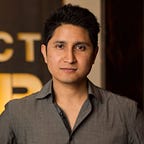This is an excerpt from my latest book Dear Hannah: 70 Methods I Used and Abused to Change Who I Am.
Using Excel to Track My Happiness
Date: July 7, 2004
Age: 22
Location: Palo Alto, CA
Subject: Spreadsheet for Measuring Emotions
Hi Hannah. How do you do it? It’s not that you’re always happy. It’s that even when you’re unhappy you are somehow happier than most unhappy people. It’s been two weeks since I graduated from Stanford, and I’ve been in a complete malaise. All my friends have gone home, and I’m still in my small apartment in downtown Palo Alto. I don’t have a job lined up, so I’ve been spending most of my days wandering around University Ave. Since I don’t cook, I walk there three times a day: breakfast, lunch, and dinner. Three times a day, I bask in the sunshine and well-paved sidewalks, while inside my head is a maelstrom of introspection.
One time I wandered into Barnes and Nobles and browsed the self-improvement section. I like to do this every six months to see if any new books have come out that could be the answer to all my problems. And just like that, I stumbled upon one with an interesting title: Authentic Happiness. In flipping through it, I realized that I had been missing the point about self-improvement this whole time. Everything is about happiness.
The author Martin Seligman breaks down the secret of happiness. Really it’s just a matter of having more positive affects than negative. He starts by listing the positive affects, which are joy, flow, glee, pleasure, contentment, serenity, hope, and ecstasy.
When I read this line, I had to put the book down. “If this is all it takes to be happy,” I thought, “then all I need to do is take on each emotion, one-by-one, and do something to boost my score in it!”
So I opened up Excel and placed each of these affects in one column. In the next column, I put a number between 1 and 10 representing how much of that affect was present in my life. After I filled this out, I scanned the list and saw that it was mostly 3s and 4s.
Doing this exercise was like an awakening. I picked an item at random — ecstasy — and decided I could easily improve that by cooking. So I picked a dessert from The Joy of Cooking and made a Brie, apple, peanut butter, and raisin concoction, which I ate right off of the cutting board, savoring each bite. After the dessert, I focused on my glee emotion. So I picked up a paintbrush and acrylics and started a new painting. Then I decided to improve my serenity score, and so I laid on a park bench for an hour, basking in the afternoon cool-off.
When I got home, I bumped into Helen, an elderly woman who lives in my house, and she paused in her tracks, smiling at me. It was awkward at first, but then I realized it was actually I who was smiling and beaming intensely. She then asked me, “How are you?”
I told her, “I think this is the happiest day of my life.” She was speechless, but when her eyes welled up I knew she had heard me correctly.
The next morning, when I woke up, I took down my scores. They were all 9s and 10s.
- Phil
As quickly as I gained the happiness, I forgot about it the next day. By a narrow definition of happiness, it was the happiest day of my life. I had a sustained positive high longer than I think I had ever had. Imagine laughing at the funniest part of your favorite film, but then laughing and smiling like that for an entire day. That gives you a sense of how I felt. But is that really what constitutes happiness?
This is an excerpt from my latest book Dear Hannah: 70 Methods I Used and Abused to Change Who I Am.
Before Philip wrote his first line of code, he tried to re-program his mind. For his 14th birthday, Hannah gave him Dale Carnegie’s How to Win Friends and Influence People, which kicked off a life-long obsession with self-improvement. Follow Philip over 82 letters as he re-tells his journey from winning ThinkQuest, to quitting Stanford, to dealing with dating, happiness, and direction, to eventually making it as an indie iOS app developer. Dear Hannah is either a cautionary tale about self-improvement, or it is a filter for the 10% of self-help that may actually change your life.
PHILIP DHINGRA is a President’s Scholar from Stanford University, where he received his B.A. in Mathematical and Computational Sciences. In addition to authoring books on life change, he develops best-selling iOS apps including Nebulous Notes and The Creative Whack Pack (a collaboration with creativity pioneer Roger von Oech). Philip divides his time between Austin, Texas, and San Francisco, California.
